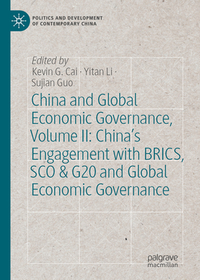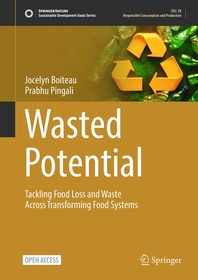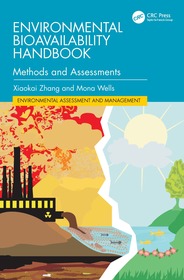
China and Global Economic Governance, Volume II: China’s Engagement with BRICS, SCO & G20 and Global Economic Governance
Series: Politics and Development of Contemporary China;
- Publisher's listprice EUR 139.09
-
57 687 Ft (54 940 Ft + 5% VAT)
The price is estimated because at the time of ordering we do not know what conversion rates will apply to HUF / product currency when the book arrives. In case HUF is weaker, the price increases slightly, in case HUF is stronger, the price goes lower slightly.
- Discount 12% (cc. 6 922 Ft off)
- Discounted price 50 765 Ft (48 347 Ft + 5% VAT)
Subcribe now and take benefit of a favourable price.
Subscribe
57 687 Ft

Availability
Not yet published.
Why don't you give exact delivery time?
Delivery time is estimated on our previous experiences. We give estimations only, because we order from outside Hungary, and the delivery time mainly depends on how quickly the publisher supplies the book. Faster or slower deliveries both happen, but we do our best to supply as quickly as possible.
Product details:
- Edition number 2025
- Publisher Springer Nature Switzerland
- Date of Publication 11 October 2025
- Number of Volumes 1 pieces, Book
- ISBN 9783031732157
- Binding Hardback
- No. of pages322 pages
- Size 210x148 mm
- Language English
- Illustrations XIV, 322 p. 51 illus., 16 illus. in color. Illustrations, black & white 700
Categories
Long description:
A novel, pressing, and challenging issue has emerged in international political economy in recent decades following the rapid rise of Chinese economic power, that is, how to accommodate China as a new economic superpower within the existing structure of global economic governance. This has become not only a highly contentious geopolitical and geoeconomic issue that is complicating already complex relations between major powers, particularly between China and the USA but also a heated issue of scholarly debate in the academia. It is within this context that the editors have decided to collect some relevant articles on this topic that have been published in some of Springer Nature’s journals in recent years and turn them into two edited volumes under the title of China and Global Economic Governance.
Volume I explores how China’s two initiatives of the Belt and Road Initiative (BRI) and the Asian Infrastructure Investment Bank (AIIB) have been bringing implications on geopolitics and geoeconomics in general and on global economic governance in particular. Volume II examines how China’s active engagement in the BRICS, the Shanghai Cooperation Organization (SCO), and the Group of 20 (G20) has helped shape the development of these groupings and impacted not only geopolitics and geoeconomics at both regional and global levels but also global economic governance
MoreTable of Contents:
Chapter 1: Introduction.- Chapter 2: Contagious convergent cumulative cooperation: the dynamic development of the G20, BRICS and SCO, John Kirton, Marina Larionova. International Politics.- Chapter 3: China’s Complex Leadership in G20 and Global Governance: From Hangzhou 2016 to Kunming 2021, John Kirton, Alissa Xinhe Wang. Chinese Political Science Review (2023) 8:331–380.- Chapter 4: China’s Global Leadership Through G20 Compliance, John J. Kirton1, Alissa Xinhe Wang. Chinese Political Science Review (2023) 8:381–421.- Chapter 5: Rising Powers and the Reform of Global Economic Governance: The BRICS and the Normative Challenge Ahead Silvia Menegazzi. Fudan Journal of the Humanities and Social Sciences (2020) 13:135–150.- Chapter 6: Importance of BRICS as a regional politics and policies, Arpita Trivedy, Moududa Khatun. GeoJournal (2023) 88:5205–5220.- Chapter 7: BRICS’ Pursuit of Multipolarity: Response in the United States, Mihaela Papa. Fudan J. Hum. Soc. Sci. (2014) 7(3):363–380.- Chapter 8: The Rise of the BRICS and American primacy, Robert J. Lieber. International Politics Vol. 51, 2, 137–154.- Chapter 9: Forging a New Security Order in Eurasia: China, the SCO,and the Impacts on Regional Governance, Jingdong Yuan. Chinese Political Science Review (2023) 8:422-439.- Chapter 10: Conclusion.
More










